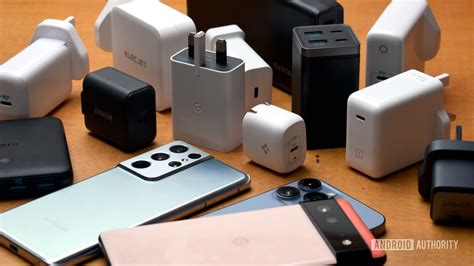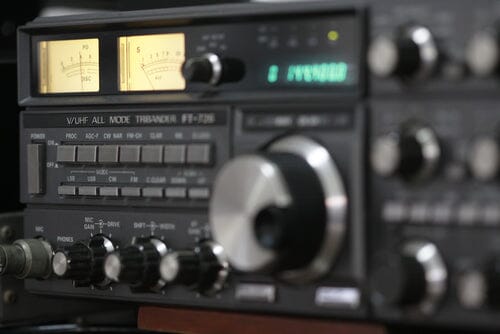How to Read a Cross-Needle SWR Meter
This guide explains how to use an SWR meter, how to read a cross-needle display, and how to tune your CB antenna or UHF/VHF antenna so you do not burn up your radio.
What Is SWR and Why Do I Care?
SWR means Standing Wave Ratio. People also say “meter SWR,” “check SWR,” or “what is my SWR.” SWR tells you how well the antenna matches the radio.
Here is what that means in plain terms:
- Your radio tries to send power out of the antenna.
- If the antenna is the right length and tuned right, most of the power goes out into the air.
- If the antenna is not right, some power bounces back down the cable into your radio.
Too much power coming back is bad. It can make the radio run hot. It can even damage the final output stage in a CB radio or ham radio. A cb radio swr meter or cb swr meter helps prevent that.
So SWR = match quality:
Lower SWR is better.
What Is Good SWR?
When you read SWR, you will see a number like 1.2, 1.5, 2.0, 3.0, etc. Lower means safer and stronger. Use this chart:
- 1.0 to 1.5: Excellent match. Keep it.
- 1.5 to 2.0: Decent. Usable. You can talk.
- 2.0 to 3.0: Not great. You should tune your antenna soon.
- Above 3.0: Warning. Stop transmitting. You can hurt the radio.
This rule works for most CB radios, most mobile ham radios, and most GMRS/UHF/VHF radios.

What Is a Cross-Needle SWR Meter?
A normal SWR meter has one needle. A cross-needle SWR meter has two needles that cross each other.
Why two needles?
- One needle shows forward power (power going out of the radio toward the antenna).
- One needle shows reflected power (power bouncing back from the antenna toward the radio).
Where the two needles cross, you can read SWR right on the scale. You do not have to flip any switch or “set” anything first. This makes it fast and easy to read under real transmit power.
This style meter is popular with CB users, ham radio users, and GMRS users because it is simple and it also shows RF watts. You basically get an SWR meter and a power meter in one box.
How to Hook Up an SWR Meter
To measure SWR the right way, you do not just hold the meter in your hand. You have to put it in line between the radio and the antenna.
- Turn off the radio first.
- Unscrew the antenna coax from the back of the radio.
- Connect that coax to the port on the meter marked “ANT” or “Antenna.”
- Use a short jumper coax (usually 1 to 3 feet long) from the meter port marked “TX” or “Transmitter” back into the radio’s antenna jack.
- Now the meter sits in the middle of the path. Radio → meter → antenna.
If you are using a cheap UHF VHF SWR meter for handheld or mobile radios, make sure the meter covers the correct frequency range. A CB radio swr meter is built for around 27 MHz. A UHF/VHF meter is built for higher bands like 144 MHz or 462 MHz. They are not the same tool.
How to Use an SWR Meter (Step by Step)
Below is the basic process that answers “how to use a swr meter,” “how do you use a swr meter,” and “how to use an swr meter.” All mean the same thing.
- Pick the channel or frequency you plan to use most. For CB this is usually Channel 19 or Channel 1 and Channel 40 to compare both ends.
- Turn on the radio.
- Set power to normal. Do not use high power amps during testing.
- Key the mic (press and hold the talk button) for a second or two. Do not yell into the mic. Just hold it so the radio is transmitting a steady carrier.
- Look at the SWR scale on the cross-needle meter. Where the two needles cross is your SWR number.
- Let go of the mic.
Do not hold the mic down for a long time if the SWR is very high. High SWR means stress on the radio.
How to Tune Your CB Antenna Using SWR
If your SWR is too high you adjust the antenna. Most CB antennas have a set screw or a little bit of whip you can slide in or out. Longer whip usually helps the low channels. Shorter whip usually helps the high channels. Here is the basic logic:
- If Channel 1 SWR is low and Channel 40 SWR is high your antenna is too long. Shorten it a little.
- If Channel 1 SWR is high and Channel 40 SWR is low your antenna is too short. Lengthen it a little.
Make small changes. Like 1/8 inch at a time. Then re-test SWR.
This process is the safe way to answer “how to tune a cb antenna without an swr meter.” The truth is you should use a meter. Guessing is risky. If you do not own a meter you can go to a radio shop and ask them to check your cb swr meter reading for you.
How to Tune a CB Antenna Without an SWR Meter
This question shows up a lot. People ask “how to tune cb antenna without swr meter” or “how to tune a cb antenna without an swr meter.” Here is the honest answer:
You can try this but it is not very accurate:
- Set up the antenna how the manual says. Mount it solid. Make sure the mount is grounded to the vehicle body.
- Talk to another radio that is close by. Ask “How strong am I?”
- Trim the whip a tiny bit shorter if they say you sound weak on the high channels but strong on the low channels.
- Stop trimming when they say you got weaker instead of stronger.
The problem is this only tells you how you sound to one other person in one place. It does not tell you actual SWR. Your SWR could still be high and slowly hurting the radio.
So yes you can try to tune without a meter. But it is not smart. A basic cb radio swr meter costs less than a new radio final. It is cheaper to test it right than to cook the radio and have to repair it.
Can a Diode Be Used as an SWR Power Meter?
Short version: kind of, but not well.
Some hobby builders make a tiny RF watt meter using a diode. The diode lets you detect RF voltage and turn it into a number you can see on a meter. This can help measure forward power. You can also build a second path for reflected power. Then you do math to guess SWR.
But here is the problem:
- Cheap diode meters are not always accurate at different frequencies.
- They can read different if your radio power changes.
- They can lie at UHF and VHF if they were built for CB frequencies.
So yes a diode can be part of a simple RF power meter. But if you ask “can a diode be used as a swr power meter,” the safe answer for normal users is: not for real tuning. Use a proper SWR meter made for your band (CB, UHF, VHF, etc).
What About UHF and VHF Radios?
CB radios talk around 27 MHz. Ham VHF, GMRS, and many handheld radios talk around 136-174 MHz and 400-480+ MHz. That is way higher frequency.
This matters because not every meter works on every band. A cheap UHF VHF SWR meter is fine for GMRS or ham handhelds. But that same meter may not read right on CB. And a CB-only meter may not read right on GMRS or ham VHF/UHF.
So match the tool to the job:
- Use a CB radio SWR meter for CB.
- Use a UHF/VHF SWR meter for GMRS, ham handheld, or mobile VHF/UHF rigs.
If you use the wrong type of meter you might think your SWR is “good” when it is actually bad.



